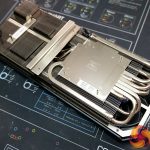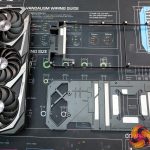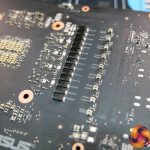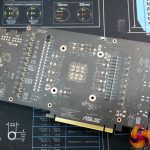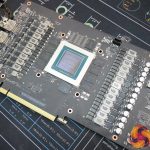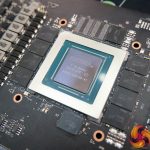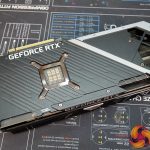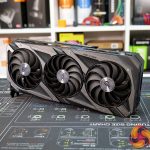Over recent months there has been a lot of talk about GPU VRAM temperatures, more specifically since the launch of Nvidia RTX 30 series cards featuring Micron GDDR6X memory. Cryptocurrency miners in particular have been struggling to keep the VRAM temperature of RTX 3080 and 3090 under control. There have been some very interesting ideas circling on forums and Reddit about how to modify coolers and backplates to help combat excessive GPU VRAM temperature.
I have seen GPU backplates with heatsinks or heatsinks and fans attached and users resorting to removing the stock GPU fan shroud and strapping 120mm case fans to the GPU. EKWB has just released its answer to high VRAM temperature on RTX 3090 cards with its range of new active backplates which actively cools the VRAM chips on the rear of a 3090 PCB with a water block.
Another way to try and improve the GPU VRAM temperature is to add more thermal pads to the backplate (not all RTX 3080 cards have thermal pads that contact the backplate) or to upgrade the stock thermal pads on both sides of the PCB to high quality, higher thermal conductivity pads which seems to be the preferred choice of many.
Like the majority of Enthusiasts these days, we are finding it tricky to get our hands on brand new RTX 30 series graphics cards for our special build projects. For our latest Western Digital project build, we had to source a card that had already been used. We tracked one down from another media outlet and it arrived with a Corsair XG7 water block pre-installed which was great. However, for the video we needed to re-install the stock cooler, this is where the fun began.
The previous user of the card was a novice with custom water cooling, so the card arrived with us looking in a bit of a sorry state but fully working. The mounting screws for the stock cooler were missing (luckily we managed to track them down) and the stock thermal pads had been torn off and tossed away, this got us thinking. With the current GPU market like it is, this is a problem that enthusiasts could face when buying a used card but wanting to revert to using the stock air cooler.
With this in mind, we put together a short guide in this video to help you guys if you come across this problem. The information should help you accurately measure your graphics card in case it arrives, like ours did, with all the thermal pads missing. This could also be a handy video in case you take your own card apart and destroy the thermal pads in the process, or if you are not sure how much your thermal pads have compressed since being fitted originally.
Tools required:
No expensive measuring equipment is needed, a set of feeler gauges and a digital vernier calliper will come in handy, and it will be a good idea to buy a selection of thermal pads in various thicknesses unless you don’t mind having your graphics card out of action for a few days while you order the correct ones.
Follow the information in the video and you should be able to work out the thickness of thermal pads for almost any graphics card, some may not be as easy to access components with the feeler gauges (the stock heatsink may interfere) however, using a combination of the feeler gauges and vernier callipers should offer good results in all situations.
Discuss on our Facebook page HERE.
KitGuru says: We hope this helps some of you guys trying to improve the VRAM thermals on your graphics cards, If you have any of your own ideas and GPU cooler/backplate modifications that have worked, be sure to let us know.
 KitGuru KitGuru.net – Tech News | Hardware News | Hardware Reviews | IOS | Mobile | Gaming | Graphics Cards
KitGuru KitGuru.net – Tech News | Hardware News | Hardware Reviews | IOS | Mobile | Gaming | Graphics Cards


